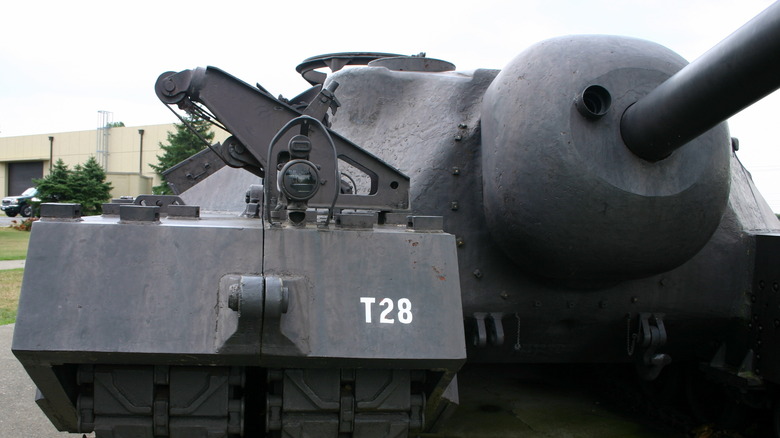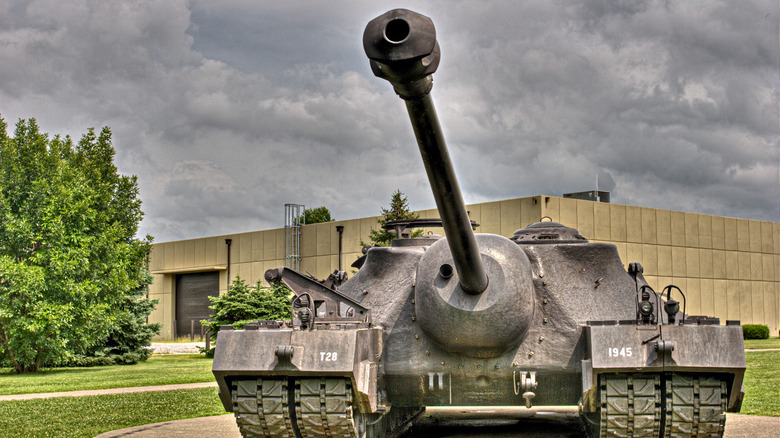Everything To Know About The T28 Super Heavy Tank
When a tank comes with built-in adjectives like "super" and "heavy," the name speaks for itself. However, the fear such a title could strike into soldiers' hearts never was, as only two prototypes of the T28 Super Heavy Tank were produced, and neither saw combat.
According to the National Interest, the T28 Super Heavy Tank was, in essence, the largest tank in American history. However, it was not made that way simply to appear intimidating. During World War II, the U.S. sought to develop a heavy tank to keep up with a new generation of German armored giants, and specifically to break through heavy German fortifications of the Siegfried Line.
So the U.S. Army designed a 95-ton beast with 12 inches of armor at certain points, a 105mm T5E1 gun meant to destroy heavy concrete fortifications, cabin space for a crew of four, and a .50-caliber machine gun on the roof. But the issue is that T28 wasn't technically a tank.
[Featured image by Pahcal123 via Wikimedia Commons | Cropped and scaled | CC BY-SA 4.0]
A tank by any other name
The National Interest notes that this vehicle was closer in structure to a "self-propelled gun." Typical tanks often feature a revolving turret, but in this case, the gun was mounted to the front hull and could only fire forward, leaving the T28 vulnerable to attacks from the back. So while it was initially designated simply as the T28 tank, the Army re-designated it as the 105 mm gun motor carriage T95 in 1945. However, in 1946 they switched it back and renamed it the T28 Super Heavy Tank.
Unfortunately for the tank, the naming battle was the only one it saw. By the time the vehicle passed trials, the mission for which it was commissioned — breaching the heavy fortifications of the German Siegfried Line — had already been accomplished by that point in the war. By the time the first tank was delivered in December 1945, the war was three months over. So the tank remained in the U.S. as an engineering study, with only two prototypes built, and neither went into service due to heavy weight and high maintenance costs.
But the streak of bad luck didn't end there. In 1947, one of the T28s was damaged in an engine fire and ultimately sold for scrap. In 1974, the other was discovered abandoned in a field at Fort Belvoir, Virginia, and now has a proper home at Fort Moore, Georgia. There it retired, except for a small accident in 2017 reported by the National Armor and Cavalry Museum, when the T28 slid off a trailer during transport and rolled into a ditch.
[Featured image by Randen Pederson via Wikimedia Commons | Cropped and scaled | CC SA 2.0 Generic]

